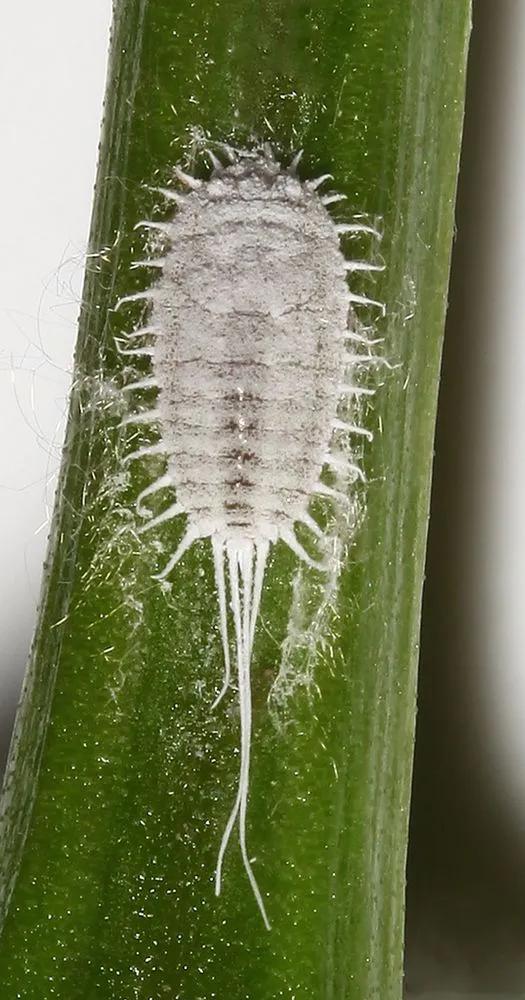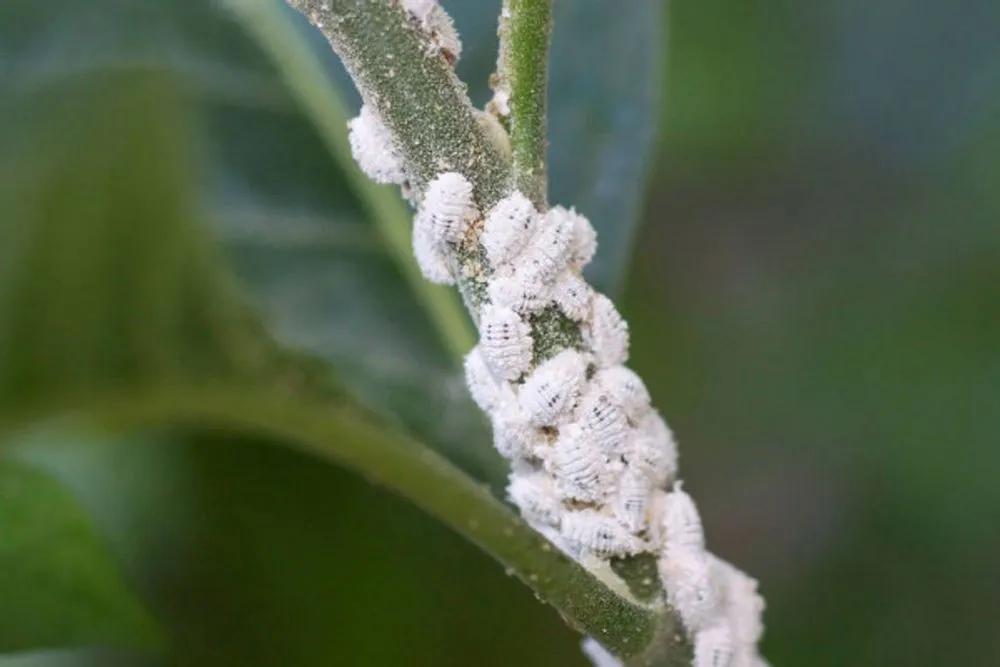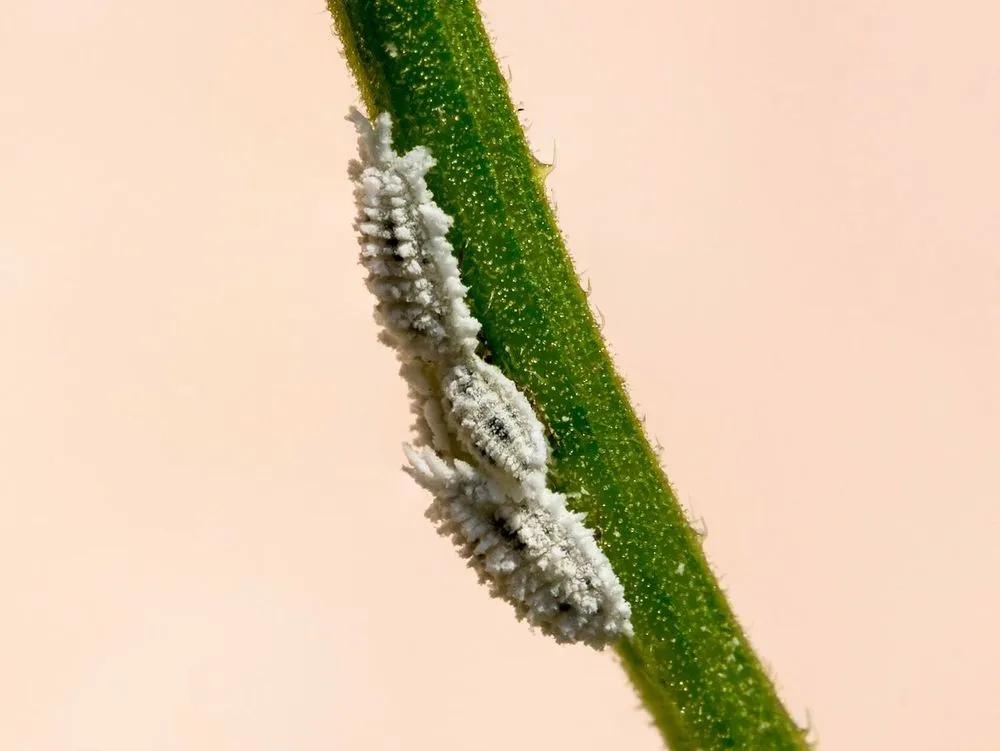Pseudococcidae (mealybugs) are sap-sucking insects acting as a vector for several plant diseases and secreting a powdery wax layer as protection.
Pseudococcidae



Signs of damage
Mealybugs damage crops in a variety of ways. Pupae and females drink the sap of the plant, slowing growth and causing deformation and yellowing of the leaves, sometimes with subsequent leaf fall. The overall effect is a weakening of photosynthesis and hence a decrease in yield.
How to prevent
To keep mealybugs at bay, spray your plants once a week with a solution of neem oil in water. If you coat all plant surfaces, the neem oil will slow or stop feeding on your plants by a wide variety of pests. In addition, the oil coats any eggs or crawlers and will smother them.
Heal
Pyrethroids such as permethrin, bifenthrin or cyfluthrin can be used to control mealybugs. Some gardeners use Green Lacewing (Chrysopidae) larvae to control mealybug infestations, as the larval Lacewings are voracious predators of aphids and other small insects.
Go Premium to continue reading
Also you’ll get unlimited access to disease identification and all the other beneficial features
More problems
